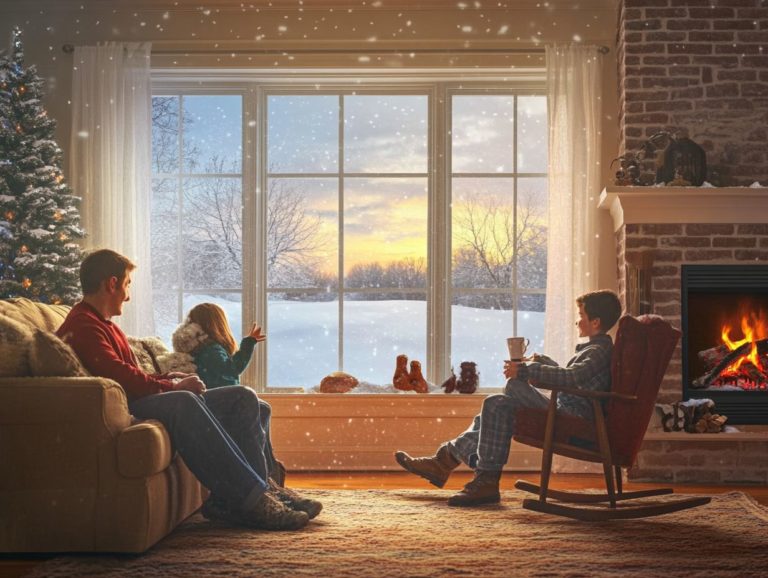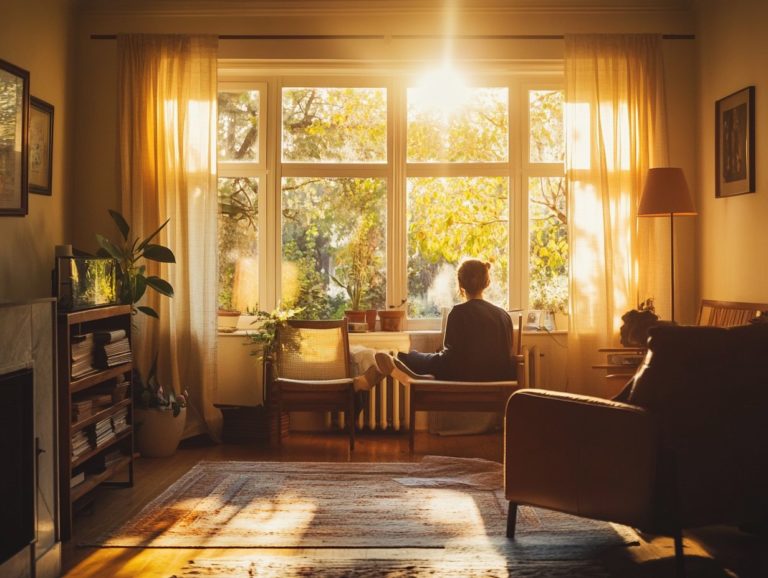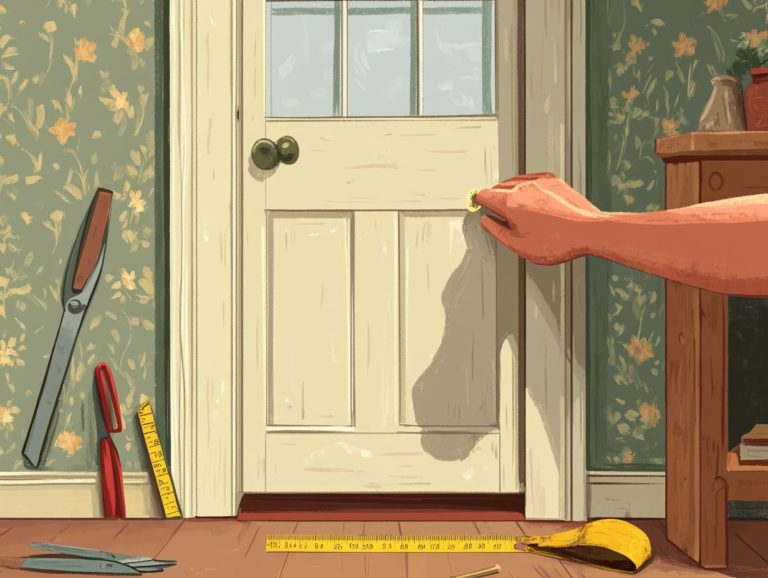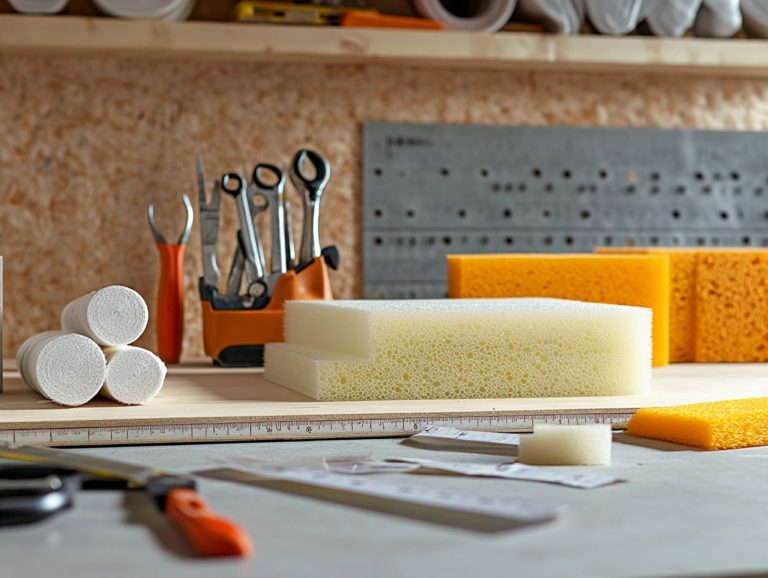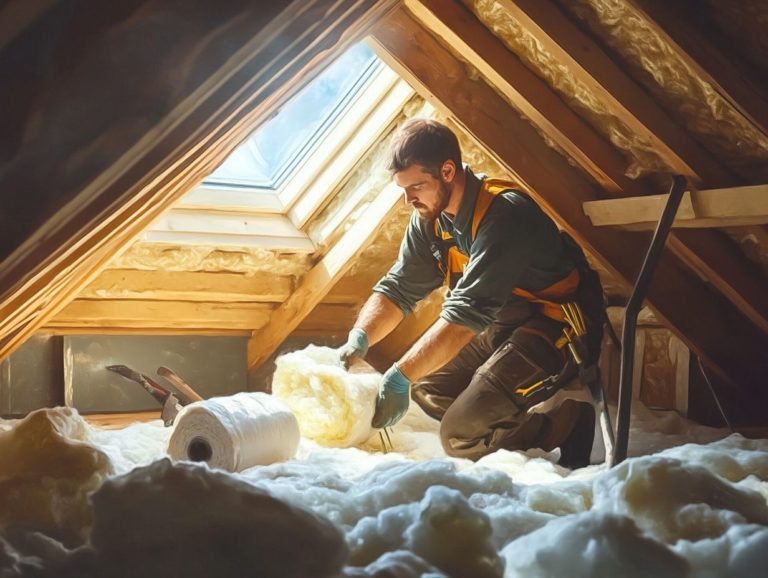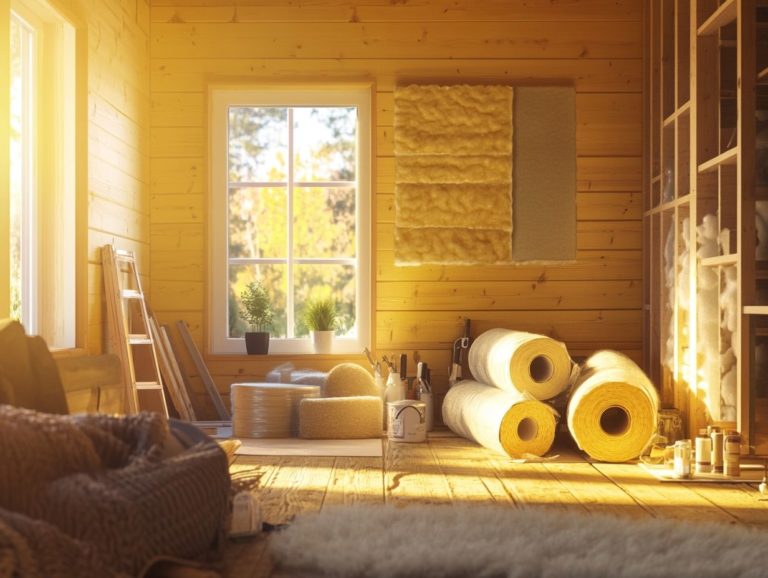The Best Weatherproofing Techniques for Homes
Preparing your home for the elements goes beyond seasonal chores; it’s essential for ensuring comfort and safety year-round.
By thoroughly inspecting for existing damage, upgrading your windows, and insulating your walls, you can implement effective weatherproofing strategies. These not only save money on energy bills but also protect your valuable investment.
This article explores the best weatherproofing techniques, offering practical tips to help you create a resilient home environment ready to face various challenges.
Contents
- Key Takeaways:
- 1. Inspect and Repair Any Existing Damage
- 2. Seal Any Gaps or Cracks
- 3. Install Weatherstripping on Doors and Windows
- 4. Upgrade to Energy-Efficient Windows
- 5. Install a Durable Roof
- 6. Clean and Maintain Gutters and Downspouts
- 7. Consider Adding Storm Shutters
- 8. Use Exterior Grade Paint
- 9. Properly Insulate Walls and Attic
- 10. Use Landscaping to Shield Against Harsh Weather
- 11. Invest in a Quality HVAC System
- 12. Protect Outdoor Furniture and Equipment
- 13. Consider Installing a Backup Generator
- 14. Regularly Check and Maintain Weatherproofing Measures
- 15. Seek Professional Help if Needed
- Frequently Asked Questions
- What are the best weatherproofing techniques for homes?
- Why is weatherproofing important for homes?
- How do I identify air leaks in my home?
- What types of insulation are best for weatherproofing homes?
- Do I need to hire a professional to weatherproof my home?
- How often should I reapply weatherproofing to my home?
Key Takeaways:

Inspect and fix damage today to safeguard your home.
Seal gaps and cracks to keep out moisture and drafts, improving energy efficiency.
Install durable materials and consider energy-efficient upgrades to protect against harsh weather.
1. Inspect and Repair Any Existing Damage
Inspecting and addressing damage to your foundation is crucial for preserving your home s structural integrity, especially in areas vulnerable to pressure from water and moisture problems.
Look out for signs like cracks in your foundation walls, which could suggest shifting or settling, and white powdery residues that indicate potential water issues. Catching these indicators early can help you avoid more severe damage later on.
Implementing foundation waterproofing techniques, such as installing drainage systems or applying sealants, can significantly reduce these risks. Conducting thorough assessments will clarify the necessary repairs, ensuring your foundation stays intact and retains its value.
Act now to stop small problems from turning into big headaches!
2. Seal Any Gaps or Cracks
Sealing gaps or cracks in your foundation is vital for preventing water intrusion and managing moisture effectively. This helps counteract any moisture that could lead to costly damage over time.
You ll find various waterproofing sealers and products, each with unique properties tailored for effective moisture management.
- For instance, liquid rubber sealants create a flexible barrier,
- while cementitious waterproofing compounds bond tightly to surfaces, offering a long-lasting solution.
Identifying gaps is just as important. You can do this through visual inspections or using moisture detection tools. This proactive approach lets you seal those vulnerabilities promptly, reducing the risk of infiltration.
By selecting the right sealers and employing established techniques, you can significantly enhance your property’s resilience against water damage. Understanding the main types of weatherproofing ensures a drier and healthier environment.
3. Install Weatherstripping on Doors and Windows
Installing weatherstripping on your doors and windows is a smart move for managing moisture. It creates waterproof barriers that keep your indoor space safe from unwanted air and moisture infiltration.
This simple but effective approach not only boosts insulation but also plays a critical role in energy efficiency by maintaining consistent indoor temperatures.
With various weatherstripping options available ranging from foam tape and V-strips to magnetic strips you can choose the perfect fit for your unique needs and conditions.
The effectiveness of these materials depends on where you install them, so considering the right vapor barrier can enhance moisture reduction even further.
Opting for high-quality barrier materials that resist deterioration and are suitable for your climate is essential for achieving lasting results.
Don t wait! Begin your home s transformation with these tips now!
4. Upgrade to Energy-Efficient Windows
Upgrading to energy-efficient windows not only enhances your home’s energy performance but also plays a vital role in preventing moisture infiltration and managing water vapor two factors that can seriously jeopardize your foundation’s waterproofing efforts.
These windows are designed to reduce condensation, a frequent culprit that, if left unchecked, can lead to mold growth and structural damage. By effectively insulating against temperature fluctuations, they help maintain a stable indoor environment, significantly reducing the potential for moisture accumulation.
When you integrate energy-efficient windows into a comprehensive moisture management strategy, you greatly improve your building’s safety and durability. This combination ensures reliable temperature control while protecting your home and keeping occupants healthy, creating a comfortable living space that is built to withstand the test of time.
5. Install a Durable Roof
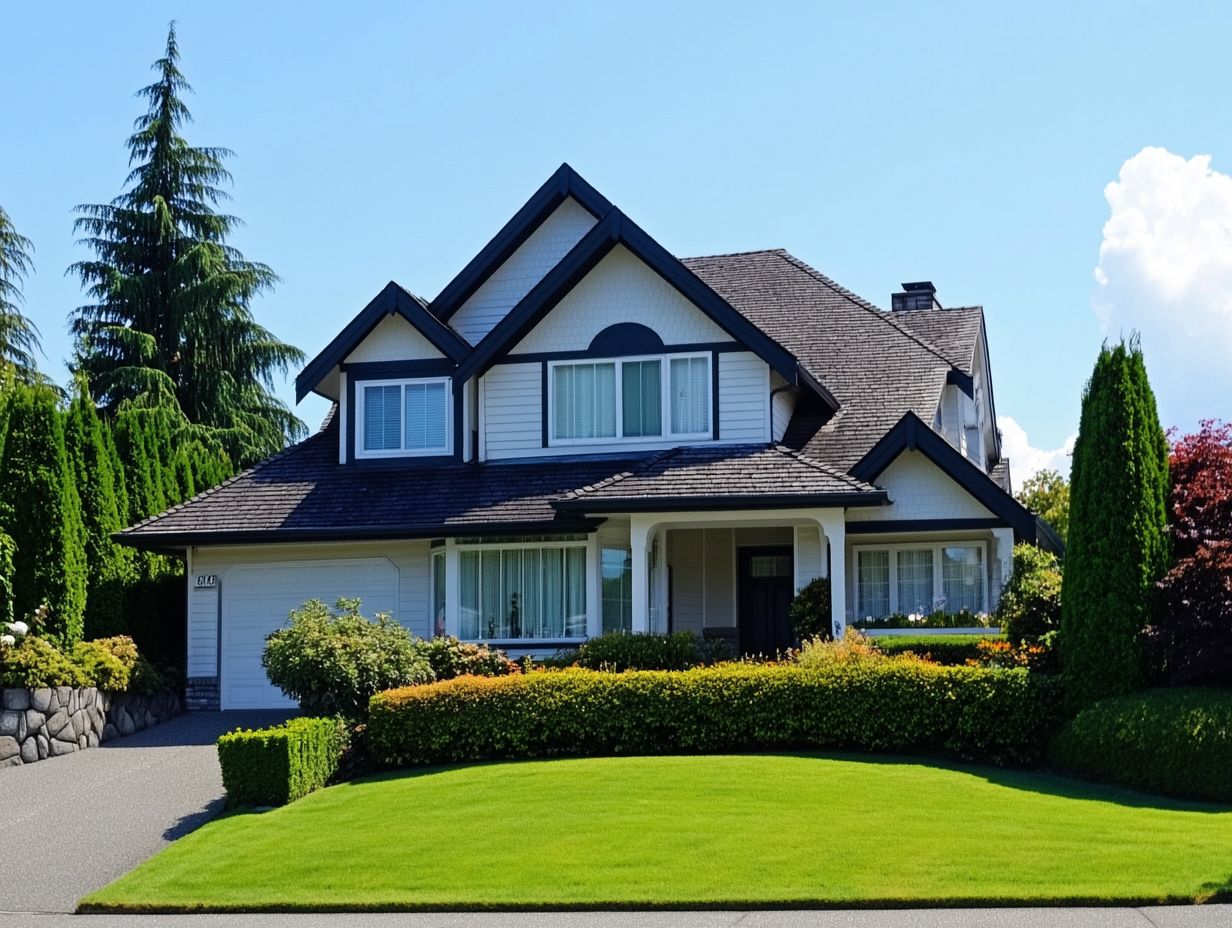
Installing a durable roof is crucial for maintaining the integrity of your building. It ensures that waterproof coatings effectively shield your home from heavy rainfall and overflow, which enhances the performance of your drainage systems.
Consider a variety of roofing materials such as metal, asphalt shingles, and clay tiles. They elevate the aesthetic appeal of your home while providing exceptional durability against extreme weather conditions.
When selecting a roofing solution, it’s important to think about waterproofing options techniques that prevent water from entering your home. High-quality membranes and coatings designed for harsh climates can ensure that water runs off efficiently, minimizing pooling and alleviating the strain on your drainage channels.
Incorporate proper slope angles and drainage designs to effectively manage rainwater. This approach safeguards your entire structure while ensuring a reliable and long-lasting roofing system.
6. Clean and Maintain Gutters and Downspouts
Regularly cleaning and maintaining your gutters and downspouts is essential for fulfilling drainage requirements. It prevents water retention and safeguards your foundation walls from the threat of water damage.
Over time, leaves, debris, and even the occasional small creature can obstruct these systems, leading to overflow. This can erode your landscaping and contribute to mold growth, ultimately compromising the structural integrity of your home.
Implementing effective drainage systems is equally vital. It ensures that excess rainfall swiftly and effectively channels away from your property. Scheduling routine inspections at least twice a year, particularly before and after heavy rain seasons, is a wise move.
Mesh screens help reduce debris buildup effectively, enhancing the overall efficiency of your drainage system while also minimizing the risk of costly repairs in the future.
7. Consider Adding Storm Shutters
Adding storm shutters elevates your building’s safety and serves as an effective moisture control measure, providing a waterproofing solution that safeguards your home during severe weather conditions.
You ll find various types of storm shutters available, each crafted to deliver distinct levels of protection.
- For example, accordion shutters are renowned for their ease of use and dependable defense against fierce winds.
- Roll-down shutters boast a sleek appearance coupled with enhanced wind resistance.
- Meanwhile, Bahama shutters not only beautify your home but also shield your windows from debris.
By installing these protective barriers, you significantly reduce the risk of water damage during heavy rains while also enhancing the overall safety of your dwelling.
This gives you peace of mind, so you can relax during storms. Don’t wait! Upgrade now to protect your home and family from the elements!
8. Use Exterior Grade Paint
Using exterior-grade paint is crucial for enhancing waterproofing and mold resistance. It creates a strong barrier that protects your home from moisture and promotes durability.
This type of paint is specially formulated to withstand heavy rain, humidity, and fluctuating temperatures. It is the ideal choice for various climates.
When applied correctly, it effectively prevents water from getting in, which can lead to structural damage and unwanted mold growth.
To achieve the best results, meticulous preparation is key. Thoroughly cleaning the surface and ensuring it s dry will optimize adhesion.
Applying multiple coats and using techniques like back-rolling will create a smoother surface, significantly enhancing the paint s effectiveness as a protective shield against the elements.
9. Properly Insulate Walls and Attic
Properly insulating your walls and attic is essential for preventing water from getting in. By establishing an effective moisture barrier, you enhance energy efficiency and protect your basement’s integrity.
This foundational step creates a climate-controlled environment, vital for maintaining comfort and safeguarding your structure.
Different insulation materials, like fiberglass, spray foam, and cellulose, play unique roles in moisture management. For example, spray foam insulation provides an airtight seal, which means it keeps air and moisture from getting in, while fiberglass with a moisture barrier delivers even better results.
Installing insulation requires proper sealing and avoiding gaps. This maximizes effectiveness. By integrating insulation with other waterproofing methods such as using a sump pump or installing a drainage system you adopt a comprehensive approach to moisture control, fostering a healthier living space.
10. Use Landscaping to Shield Against Harsh Weather
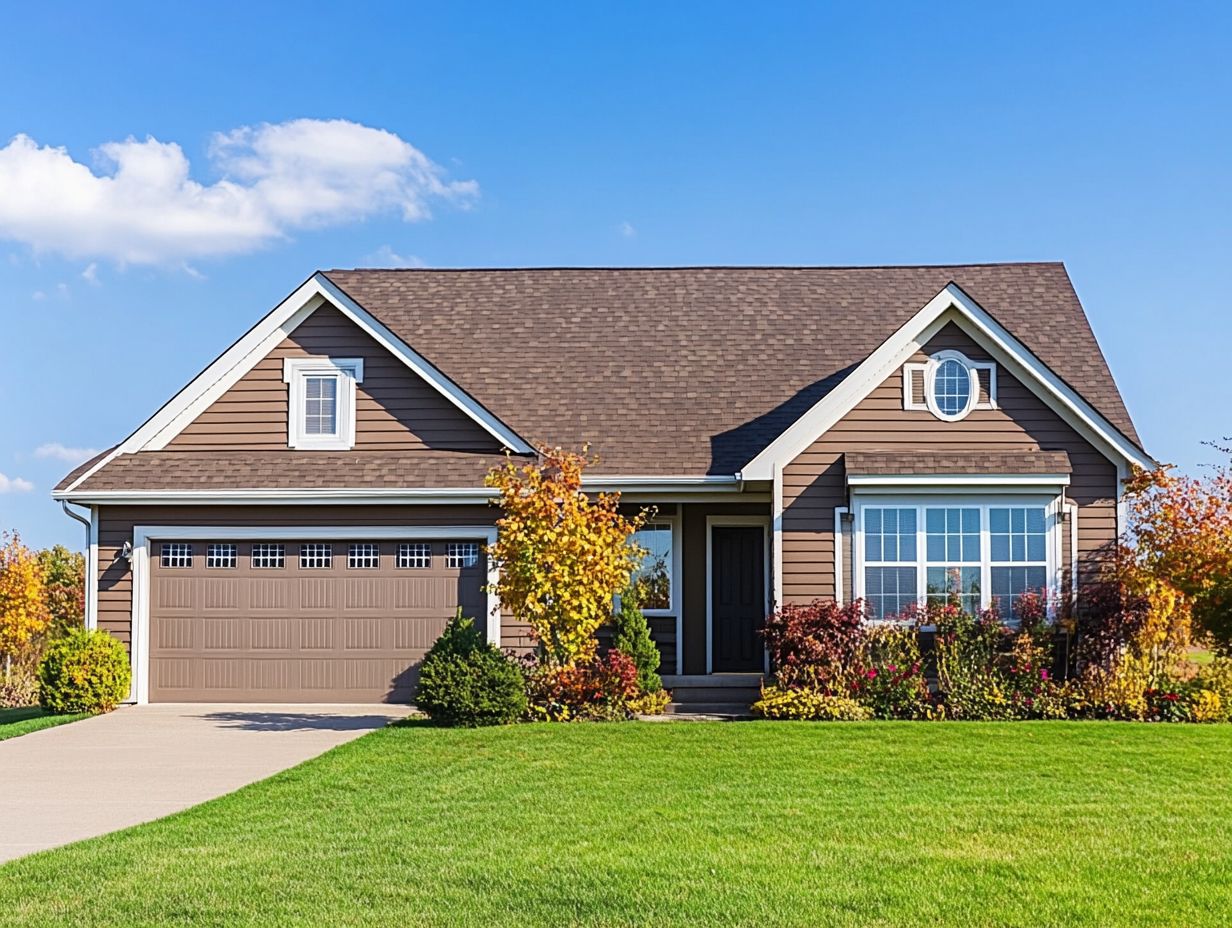
Utilizing landscaping effectively can be your best defense against harsh weather. It promotes proper soil drainage and enhances foundation waterproofing.
By strategically positioning vegetation, you create natural barriers that absorb excess rainwater and reduce runoff. Trees and shrubs with deep roots stabilize the soil and direct water away from your foundation.
Incorporating proper grading techniques allows you to slope the land away from your house, further improving drainage. This dual approach melding vegetation with thoughtful grading not only optimizes water flow but also strengthens your waterproofing efforts, safeguarding your home s structural integrity.
11. Invest in a Quality HVAC System
Don t wait investing in a quality HVAC system can dramatically change your home s comfort and safety. A well-functioning HVAC system is your best ally in managing humidity levels and minimizing mold growth.
It improves airflow and temperature regulation, creating a more inviting atmosphere. To guarantee optimal performance and longevity, regular maintenance is a must. As a homeowner, you should prioritize:
- Changing air filters every few months
- Scheduling annual professional inspections
- Cleaning ducts to prevent allergens from building up
These straightforward steps can significantly lower your energy costs and extend your system’s life, ultimately making your home a safer and more comfortable haven for everyone.
12. Protect Outdoor Furniture and Equipment
Protecting your outdoor furniture and equipment is essential to preventing moisture entering. By using the right weatherproofing measures and waterproofing products, you can significantly extend their lifespan.
You have a variety of options available:
- Waterproof sprays
- Sealants
- Specially designed covers for outdoor use
Each of these products creates a protective barrier against rain, snow, and harmful UV rays, ensuring your furniture stays in excellent condition year-round.
For optimal results, clean surfaces thoroughly before applying any products. Also, consider storing items in a dry, sheltered area during severe weather. Don t wait until it s too late neglecting these steps can lead to mold, mildew, and irreversible damage, undermining your protective efforts.
13. Consider Installing a Backup Generator
Installing a backup generator isn’t just convenient; it s crucial for your safety during power outages. It helps maintain moisture control and supports waterproofing efforts when you need it most.
When the power unexpectedly cuts out, many homeowners may overlook immediate threats in their living environment. One major concern is the potential malfunction of sump pumps, which are vital for preventing water buildup in basements.
Without a reliable power source, these pumps can stop working, putting your space at risk of flooding and long-term moisture issues. By incorporating a backup generator, you keep these vital systems running smoothly, lowering the chances of dampness and damage to your belongings.
This proactive step not only protects your property s structural integrity but also fosters a healthier living environment for everyone inside.
14. Regularly Check and Maintain Weatherproofing Measures
Regularly checking and maintaining your weatherproofing measures is crucial for effective moisture control. This ensures that all your waterproofing techniques are functioning properly and upholding the integrity of your building.
Don t underestimate how routine inspections can prevent long-term damage and costly repairs. By being proactive about the upkeep of your gutters, sealants, and vapor barriers, you can catch potential issues before they escalate.
A simple checklist can make this easier. Consider including items such as:
- Checking gutters for clogs and proper drainage
- Inspecting sealants around doors and windows for cracks or deterioration
- Verifying that vapor barriers in basements and crawl spaces are intact and unobstructed
By following this checklist, you can ensure that your waterproofing measures remain strong and effective, safeguarding your property from moisture-related problems.
15. Seek Professional Help if Needed
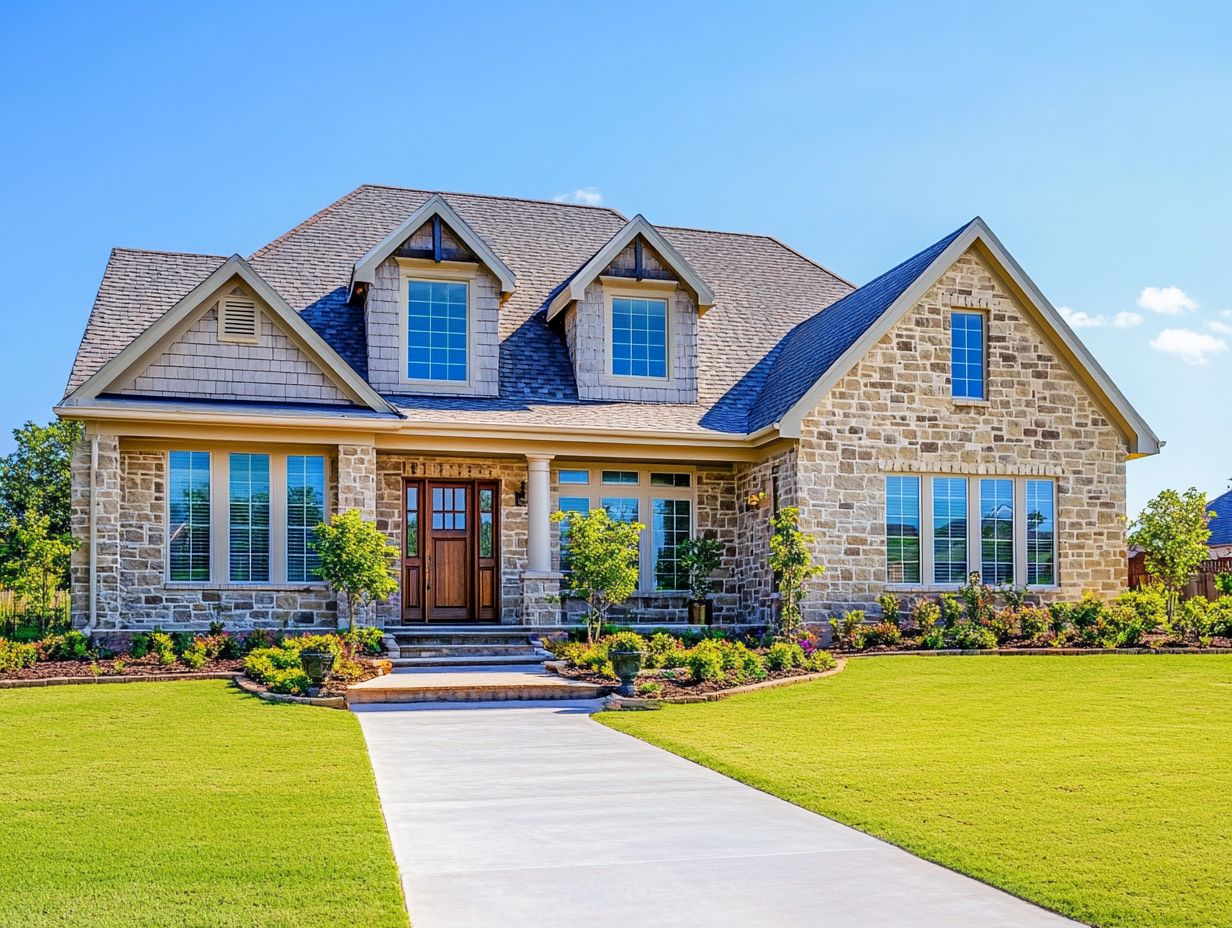
When you encounter significant water intrusion or structural concerns, it s vital to reach out to a qualified waterproofing contractor for a comprehensive assessment and necessary repairs.
These issues often show visible signs, such as cracks in walls, dampness in basements, or mold growth all of which can jeopardize your property s safety and overall value.
Navigating these concerns requires selecting a reliable contractor. Seek specialists who provide thorough evaluations and possess verifiable credentials.
Professional assessments are essential to ensure that repairs meet industry standards. This commitment helps maintain your foundation’s long-term integrity while preventing further deterioration and avoiding costly repairs in the future.
Frequently Asked Questions
What are the best weatherproofing techniques for homes?
The best weatherproofing techniques include:
- Sealing air leaks
- Insulating walls and attics
- Installing weatherstripping
- Using storm windows and doors
- Ensuring proper drainage around the foundation
Why is weatherproofing important for homes?
Weatherproofing is important because it helps to prevent energy loss, protects against moisture damage, and maintains a comfortable and safe living environment.
How do I identify air leaks in my home?
To find air leaks in your home, start with a visual inspection. Look closely around windows, doors, electrical outlets, and any gaps in the walls or ceilings.
What types of insulation are best for weatherproofing homes?
Fiberglass, cellulose, and spray foam are among the best insulation materials for weatherproofing. They offer excellent protection and can be used in many areas of your home.
Do I need to hire a professional to weatherproof my home?
Some weatherproofing tasks can be DIY, but it’s wise to hire a professional for complex jobs. For older homes, exploring weatherproofing strategies can provide the right expertise and tools needed to do the job effectively.
How often should I reapply weatherproofing to my home?
Most weatherproofing materials, like caulk and weatherstripping, should be reapplied every 2-3 years. Regularly checking for wear and damage is crucial to keep your home well-protected.

